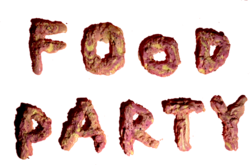3단계 양자 암호 프로토콜
Three-stage quantum cryptography protocolKak의 3단계[1] 프로토콜로도 알려진 3단계 양자 암호 프로토콜은 Subhash [2]Kak이 제안한 인증된 두 당사자인 Alice와 Bob의 무작위 편파 회전을 사용하는 데이터 암호화 방법입니다.원칙적으로 이 방법은 단일 광자를 [3]사용하는 경우 데이터의 연속적이고 깨지지 않는 암호화에 사용할 수 있습니다.데이터 직접 암호화에 사용할 수 있지만 키 교환에도 사용할 수 있다는 점에서 QKD(Quantum Key Distribution) 방식과는 다르다.
이 방법의 기본 개념은 앨리스와 밥이 모두 비밀을 담은 상자에 자물쇠를 걸어놓음으로써 신뢰할 수 없는 택배를 통해 비밀(또는 귀중품)을 보내는 것인데, 이를 이중 잠금 암호법이라고도 한다.앨리스는 비밀이 담긴 상자를 잠그고 밥에게 전달하고 밥은 자신의 자물쇠를 채운 후 돌려보낸다.이제 앨리스는 자물쇠를 풀고(변조되지 않았는지 확인한 후) 밥에게 돌려보냅니다.밥은 마찬가지로 자물쇠를 풀고 비밀을 얻습니다.땋은 형태에서는 원패스만 사용 가능하지만, 여기에서는 앨리스와 밥이 초기 [4][5]키를 공유합니다.
이 프로토콜은 암호 변환이 고전적인 알고리즘을[6] 사용하는 양자 키 배포와 달리 완전히 양자화된 안전한 통신 방법으로 제안되었습니다.
기본적인 편광 회전 방식은 [7]오클라호마 대학의 양자 광학 실험실의 Pramode Verma에 의해 하드웨어에 구현되었습니다.[8][9] 이 방법에서는 앨리스와 밥의 교환에 둘 이상의 광자를 사용할 수 있기 때문에 다광자 양자 [10]암호법의 가능성을 연다.이는 감청자가 빼낸 광자의 수가 편광각을 결정하기에 충분하지 않은 한 효과가 있다.중간자 공격에 대처할 수 있는 버전도 [11]발전했다.
파라흐는 회전 양자 오류 하에서 3단계 프로토콜을 분석하고 이러한 오류를 수정할 [12]수 있는 수정을 제안했다.수정된 프로토콜의 한 가지 흥미로운 특징은 회전 오류 값에 불변하므로 임의 회전을 수정할 수 있다는 것입니다.
「 」를 참조해 주세요.
레퍼런스
- ^ Cardinal, David (March 11, 2019). "Quantum Cryptography Demystified: How It Works in Plain Language". Extreme Tech.
- ^ Kak, Subhash (2006). "A Three-Stage Quantum Cryptography Protocol". Foundations of Physics Letters. 19 (3): 293–296. arXiv:quant-ph/0503027. Bibcode:2006FoPhL..19..293K. doi:10.1007/s10702-006-0520-9. S2CID 7245233.
- ^ Chen, Yuhua; Verma, Pramode K.; Kak, Subhash (2009). "Embedded security framework for integrated classical and quantum cryptography services in optical burst switching networks". Security and Communication Networks: n/a. doi:10.1002/sec.98.
- ^ James Harold Thomas (2007). "Variations on Kak's Three Stage Quantum Cryptography Protocol". arXiv:0706.2888.
{{cite journal}}:Cite 저널 요구 사항journal=(도움말) - ^ Darunkar, Bhagyashri; Verma, Pramode (2014). "The braided single-stage protocol for quantum secure communication". In Donkor, Eric; Pirich, Andrew R; Brandt, Howard E; Frey, Michael R; Lomonaco, Samuel J; Myers, John M (eds.). Quantum Information and Computation XII. Vol. 9123. p. 912308. doi:10.1117/12.2050164. S2CID 62145124.
- ^ Thapliyal, Kishore; Pathak, Anirban (2018). "Kak's three-stage protocol of secure quantum communication revisited: Hitherto unknown strengths and weaknesses of the protocol". Quantum Information Processing. 17 (9): 229. arXiv:1803.02157. Bibcode:2018QuIP...17..229T. doi:10.1007/s11128-018-2001-z. S2CID 52009384.
- ^ 양자암호화에 대한 다중접근법 http://www.kurzweilai.net/a-multi-photon-approach-to-quantum-cryptography [2015년 2월 10일 갱신]
- ^ 양자 광학 실험실.http://www.ou.edu/coe/tcom/research/quantum-optics1.html [2015년 2월 10일 갱신]
- ^ Verma, P.K.; et al. (2019). Multi-photon Quantum Secure Communication. Signals and Communication Technology. Springer. doi:10.1007/978-981-10-8618-2. ISBN 978-981-10-8617-5. S2CID 126012309.
- ^ Mandal, S.; MacDonald, G.; El Rifai, Mayssaa; Punekar, N.; Zamani, F.; Yuhua Chen; Kak, S.; Verma, P. K.; Huck, R. C.; Sluss, J. (2013). "Multi-photon implementation of three-stage quantum cryptography protocol". The International Conference on Information Networking 2013 (ICOIN). pp. 6–11. doi:10.1109/ICOIN.2013.6496343. ISBN 978-1-4673-5742-5. S2CID 1055005.
- ^ Clifford Chan, Kam Wai; El Rifai, Mayssaa; Verma, Pramode; Kak, Subhash; Chen, Yuhua (2015). "Security Analysis of the Multi-Photon Three-Stage Quantum Key Distribution". International Journal on Cryptography and Information Security. 5 (3/4): 01–13. arXiv:1503.05793. doi:10.5121/ijcis.2015.5401. S2CID 3220239.
- ^ Parakh, Abhishek; Van Brandwijk, Joel (2016). "Correcting rotational errors in three stage QKD". 2016 23rd International Conference on Telecommunications (ICT). pp. 1–5. doi:10.1109/ICT.2016.7500409. ISBN 978-1-5090-1990-8. S2CID 11693845.





